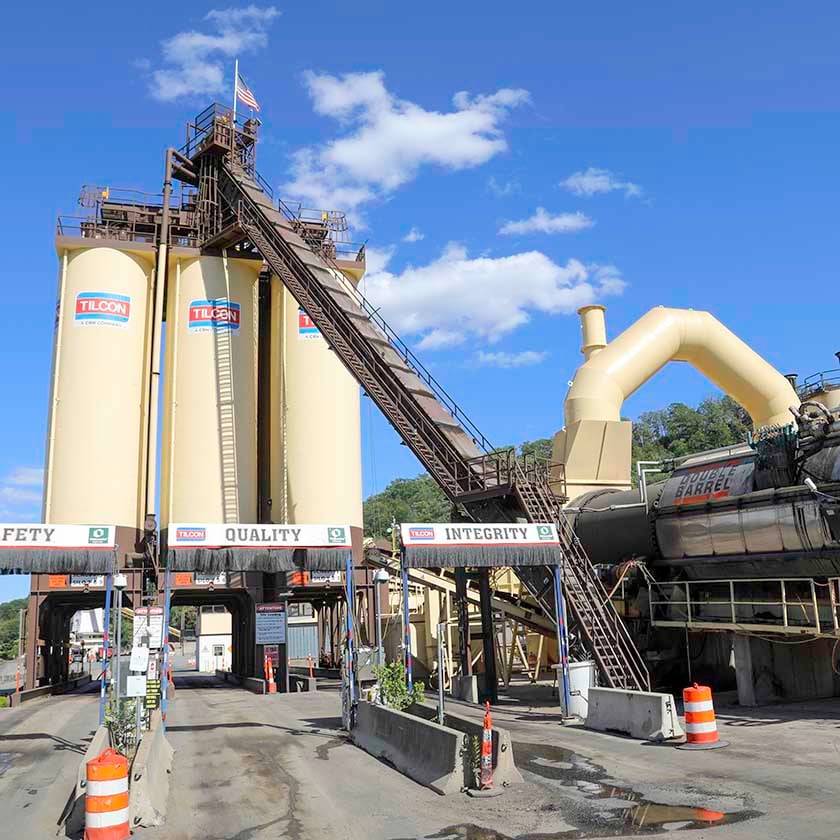Optimize Area Effectiveness with Hot Mix Asphalt Angled Parking Lot Solutions
Optimize Area Effectiveness with Hot Mix Asphalt Angled Parking Lot Solutions
Blog Article
Unlocking the Secrets of Hot Mix Asphalt Innovation
Checking out the midsts of warm mix asphalt technology uncovers a globe where thorough procedures and specific solutions merge to form our roads and infrastructure. The fusion of aggregates, binders, and fillers isn't simply a building task however a calculated orchestration of durability and efficiency. As we peer into the intricate dance of parts, a tapestry of strength and sustainability unfolds. What lies beneath this surface area of asphaltic mastery, and what secrets wait to be introduced in the world of paving technologies?
Relevance of Hot Mix Asphalt
Hot Mix Asphalt plays a vital role in contemporary framework development due to its toughness and cost-effectiveness. As the most commonly made use of leading material for roadways, highways, and auto parking whole lots, Hot Mix Asphalt provides an array of advantages that contribute to its importance in building tasks.
The toughness of Warm Mix Asphalt comes from its make-up, which includes aggregates, binder, and filler materials that are meticulously chosen and blended to fulfill details performance demands. This specific mix leads to a solid and adaptable pavement that can endure regular usage without substantial deterioration. Hot Mix Asphalt is 100% recyclable, more enhancing its sustainability and environmental advantages. On the whole, the importance of Warm Mix Asphalt in framework growth can not be understated, as it continues to be a keystone of modern-day building and construction methods.
Components of Asphalt Mixes
The composition of asphalt blends includes carefully chosen accumulations, binder, and filler materials that are essential for attaining particular efficiency requirements. Aggregates are the key element of asphalt blends, providing toughness and stability. These aggregates can be all-natural, such as gravel or crushed rock, or synthetic, like recycled materials from old sidewalks. The binder, generally asphalt or asphalt cement, holds the aggregates with each other and provides adaptability and resilience to the mix. The choice of the binder is crucial as it directly affects the mix's efficiency in different climate condition. Fillers, such as hydrated lime or Rose city cement, are made use of to improve the mix's workability and aging resistance. Angled Parking.
The mix and percentage of these components play a substantial role in figuring out the top quality and performance of the asphalt mix. Designers carefully develop the mix to fulfill particular needs, thinking about aspects like traffic volume, environment problems, and sidewalk lifespan. Appropriate selection and balancing of accumulations, binder, and fillers are important for developing sturdy, long-lasting asphalt sidewalks.
Combining and Manufacturing Methods

When the accumulations are picked, the binder, commonly asphalt cement, is added to bind the products together. The binder's top quality and quantity dramatically impact the mix's flexibility, resistance, and strength to ecological variables. Additionally, fillers like hydrated lime or Rose city concrete might be included to boost details characteristics of the asphalt mix, such as its workability or moisture resistance.
Throughout production, the accumulations and binder are heated up, generally in between 250-325 ° F(121-163 ° C ), to assist in mixing and make sure proper coating of the accumulations. The blending process must be thorough to achieve an uniform mixture that advertises the preferred performance features of the asphalt. Numerous methods, such as set blending or drum mixing, are used to accomplish top notch and constant asphalt mixes for building and construction jobs.
Elements Influencing Asphalt Efficiency
Variables influencing asphalt efficiency include a range of variables that influence the toughness, long life, and total quality of asphalt pavements. One vital aspect is the quality of materials made use of in the asphalt mix.

Ecological problems additionally influence asphalt performance. Temperature level variants, dampness infiltration, and traffic loads can all affect the architectural honesty of the pavement. Design considerations, such as sidewalk thickness and drainage, are important in ensuring the long-lasting efficiency additional reading of the asphalt pavement. By carefully taking into consideration these specialists, designers and elements can maximize asphalt performance and improve the life span of sidewalks.
Sustainable Practices in Asphalt Innovation

Additionally, the development of warm-mix asphalt (WMA) technologies has gained grip in the last few years. WMA permits the manufacturing and placement of asphalt mixes at reduced temperature levels contrasted to typical hot-mix asphalt, causing reduced power intake and greenhouse gas exhausts. The use of porous asphalt blends can aid minimize stormwater drainage concerns by allowing water to penetrate with the sidewalk and right into the ground, promoting natural water filtration and recharge procedures. By applying these lasting practices, the asphalt sector can add to constructing an extra eco-friendly and resilient facilities network.
Final Thought
To conclude, hot mix asphalt innovation plays an essential function in modern-day facilities growth due to its longevity and cost-effectiveness. By thoroughly stabilizing parts, employing correct mixing methods, and thinking about numerous elements, designers can produce high-grade asphalt blends that endure rush hour tons and rough weather conditions. Embracing sustainable methods, such as making use of recycled products and warm-mix modern technologies, even more improves the environmental kindness of asphalt modern technology.
Blending and manufacturing methods in hot mix asphalt technology entail the specific mix and processing of aggregates, binder, and fillers to develop a high-performance and long lasting asphalt mix.Aspects influencing asphalt efficiency include a variety of variables that affect the durability, long life, and general top quality of asphalt sidewalks. Lasting methods in asphalt modern technology include different efforts intended at reducing the ecological influence of asphalt manufacturing and paving procedures. By integrating recovered asphalt sidewalk (RAP) and recycled asphalt roof shingles (RAS) you can check here into brand-new asphalt mixes, the sector can substantially decrease the intake of raw materials and power, while also lowering landfill waste.
WMA permits for the production and positioning of asphalt mixes at reduced temperature levels compared to typical hot-mix asphalt, resulting in minimized power consumption and greenhouse gas exhausts.
Report this page